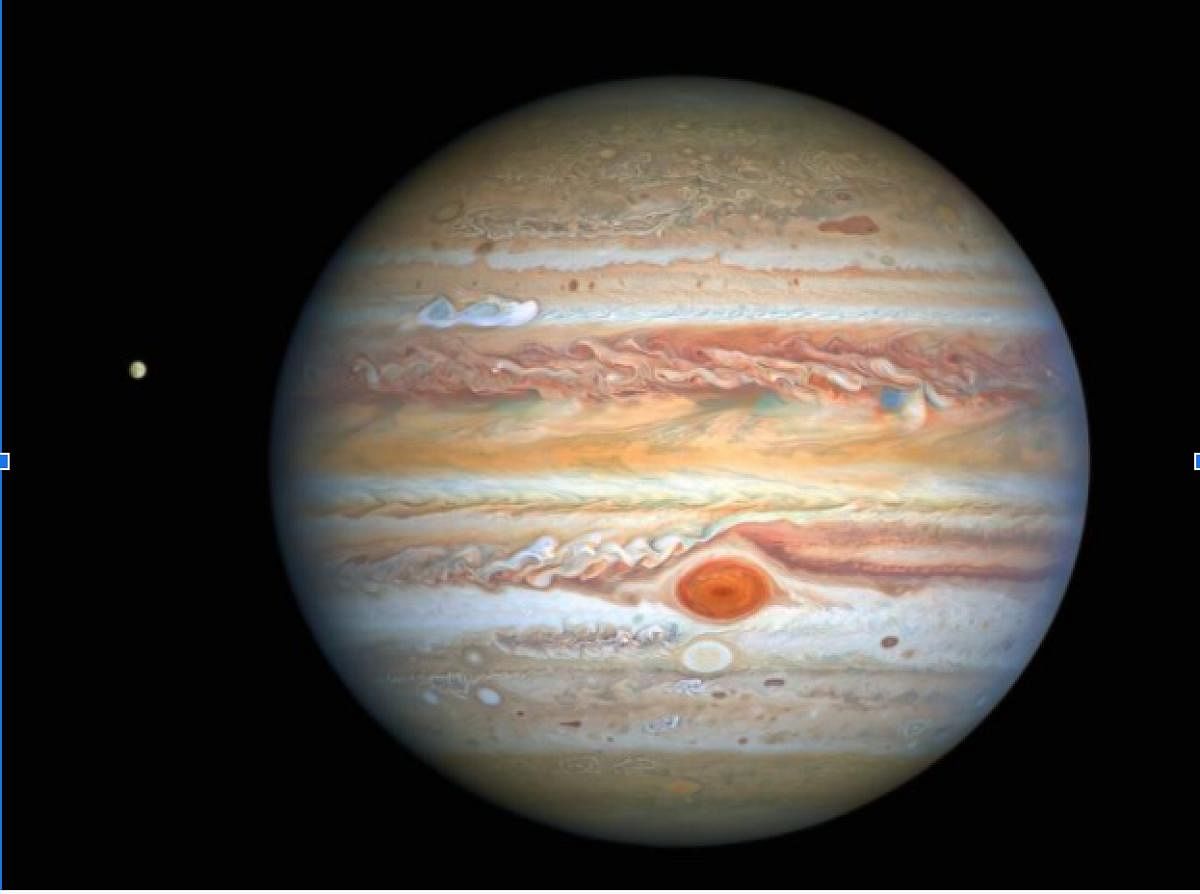
Jupiter, the largest planet in the Solar System, is the third brightest object in the night sky after the Moon and Venus. Unlike our Earth, this planet is mostly made up of hydrogen and helium, and its atmosphere has several strands of gas rotating along its latitudes, giving it a unique appearance. In its southern hemisphere lies an unusual red-coloured spot called the ‘Great Red Spot’. This oval-shaped cloud of gases is so big that the Earth would fit right into it!
The Great Red Spot rotates over Jupiter’s surface counter-clockwise, and the streams of gas at its periphery take about 6 Earth-days to complete the rotation. A thin eastward current in its south, and a strong westward current in its north, are visible. Since it has a higher pressure than its surroundings, the red spot is an ‘anticyclone’ and there is little movement of gas within its interiors. Astronomers are still unsure why the Giant Red Spot formed, what gives it the distinct red colour, or why it is stable over centuries.
Physicists think that the answers to its mysterious appearance lie in the gaseous interiors of this spot. The intermixing of gases in the different layers of the planet may give rise to ‘eddies’ and ‘vortices’ — structures of gaseous liquids fuelled by rotations of gas and transfer of heat. Recent thermal images of the Great Red Spot does lend some credence to this theory. The centre of the spot is much warmer than the periphery, just as expected if the theory were correct. Its distinct red colour might be rendered by certain carbon-based compounds filling up its interiors.
What’s even more mysterious is, in recent years, the size of the storm has been shrinking. In 1979, the Voyager 1 spacecraft made the first close-by observations and found its diameter to be close to 16,000 miles. However, the Juno spacecraft recently estimated it to be close to 10,000 miles. Could it be that the fuel powering it in the planet’s interior is dying out and it is shrinking permanently? Science is divided on this. While some argue that this could be the beginning of the end of the Great Red Spot as we know it, others think that the shrinkage is only apparent, as the eddies and vortices that might power it internally are not dying anytime soon. Nevertheless, let’s hope we discover all the underlying mysteries of this giant spot before it vanishes!